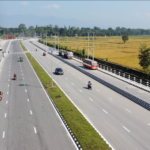When the insurgency ended in April 2006, nearly half of Nepal’s current population was either too young to remember it or not even born yet. The insurgency between 1996 to 2006 took away more than thirteen thousand lives, injured and displaced millions. The Comprehensive Peace Accord (CPA) was signed in November 2006 between the Maoist insurgents and the Government of Nepal with the UN Agency United Mission in Nepal (UNMIN) overseeing the Maoist combatants and international agencies supporting the peace process. One of the key decisions was to establish the Truth and Reconciliation Commission, which, however, only came into being nine years later in 2015. Now, nearly a decade after that, finally last week, the Enforced Disappearances Enquiry, Truth and Reconciliation Commission Act has been unanimously passed by the parliament in August 2024. The Act has is not perfect as several of victims’ concerns remain to be addressed, yet it still is important from three perspectives.
First, former adversaries, who once held guns against each other and even killed each other, have not come together in agreement to close this chapter of Nepal’s checkered history. Both the leaders on the opposite warring side – Sher Bahadur Deuba, who led the government, and Pushpa Kamal Dahal, the Maoist supremo, were present. Nepal’s political landscape has changed significantly over the past two decades with the warring factions forming coalitions and contesting elections together. Nevertheless, the passing of the Act was important to ensure that none of the parties would use the pending legislative framework as a weapon against another. The “sword hanging above the heads” is now gone.
Second, the Nepali peace process has been driven by Nepalis themselves, without the need for international mediators coming in to decide the fate of Nepalis. Nepalis have shown remarkable forgiveness, as people who lost their near or dear ones have often forgiven the perpetrators. I recall asking senior Nepal Army officers if they could distinguish between the Maoists who have been assimilated in the Nepal Army and they said surprisingly not. Unlike other conflict-ridden areas in the region, such as India’s Northeast, Nepal has achieved a rare feat of closure to be proud of. This has been notable only in South Africa and Rwanda where they have been able to find homegrown solutions for reconciliation in Africa
Third, we need to be appreciative of what could have gone wrong but did not. The King could not have agreed to abdicate but held on to power. The Maoists could have tried to push harder once they emerged from the over ground. They tried in May 2010 only to be pushed back by Nepali citizens. The Nepal Army stayed neutral and did not influence. Had they taken sides, as seen in many countries in the region like Pakistan and Bangladesh, the military could have changed the fate of politics. Keeping these things into consideration, we can be thankful that things did not get worse. This also brings us to the present. So, what does this historic passing of the Act mean then?
First, while the Act has been passed, its pending implementation raises several questions. For instance, will the people who lost their property captured by Maoists get their property back? Will people who committed heinous crimes go scot-free or will they be prosecuted? What will happen to the documented cases of extortion? Human Rights Watch alleges that over 60,000 complaints have been received concerning human rights violations and violations of international humanitarian law, yet not a single investigation has been completed. This is like 1990 when a similar commission was formed to investigate atrocities and disappearances during the thirty years of autocratic panchayat rule, but no action was taken after the report was submitted.
Second, many investors continue to ask us about Nepal’s future. Given the negative coverage Nepal gets in the press, the business community tends to have conversations highlighting problems in Nepal. Some even wonder whether peace is final and sealed whereas others speculate about the chances of another conflict or insurgency. International investors tend to speak based on their understanding of other countries. Now, we can assure them peace is here to stay in Nepal. As Nepal stands on the cusp of transitioning into a middle-income country and accelerating its economic growth through investments, this sends a strong message to the world: Nepalis know how to resolve their challenges in the Nepali way. There are international partners who support Nepal’s unique approach to handling issues in the country.
The passing of the Act is an important milestone, but it marks only the beginning of the final closure of the peace process. It is also important that half the population, who were too young or not yet born in 2006, be educated on what led to the conflict and what transpired in the past twenty years. While there is much documentation left to be done, there is also a sense of underlying pride to be instilled that Nepalis can resolve issues amongst themselves.
Sujeev is the founder CEO of beed. He leverages over 25 years of experience in diverse fields and geographies to advise, lead and inspire. With comprehensive networks in Nepal’s public, private, civil and diplomatic sectors, Sujeev is a trusted business and policy advisor and respected strategic thinker. From economies of developing countries to economies of human beings, he moves across different worlds, with his passion for the Himalayas being the axis.





